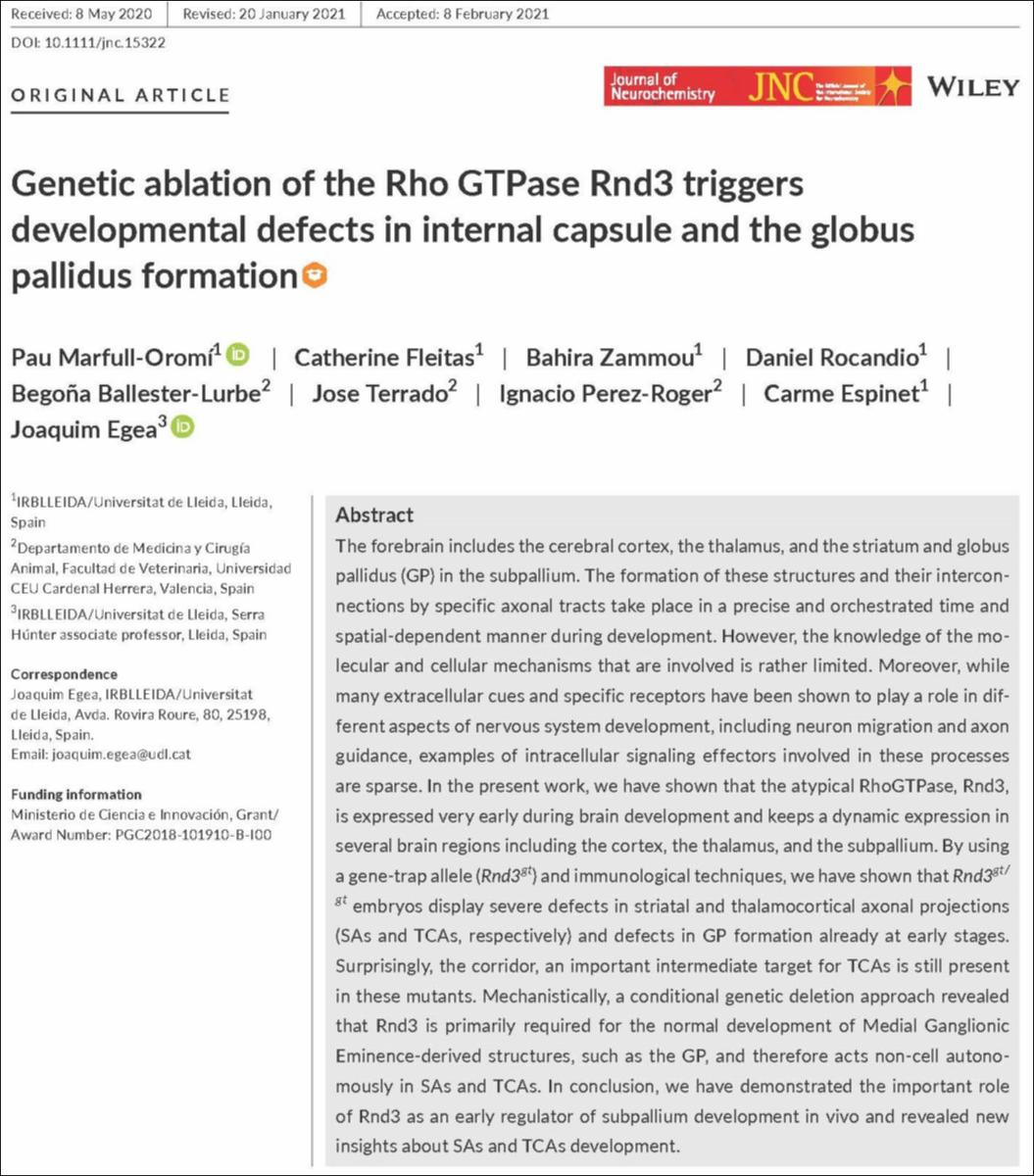Por favor, use este identificador para citar o enlazar este ítem:
http://hdl.handle.net/10637/16035Genetic ablation of the Rho GTPase Rnd3 triggers developmental defects in internal capsule and the globus pallidus formation

Ver/Abrir:
Genetic_Marfull_JNC_2021.jpg
558,93 kB
JPEG
Ver/Abrir:
Genetic_Marfull_JNC_2021.pdf
Acceso restringido
7,68 MB
Adobe PDF
Request a copy
| Título : | Genetic ablation of the Rho GTPase Rnd3 triggers developmental defects in internal capsule and the globus pallidus formation |
| Autor : | Marfull Oromí, Pau Fleitas, Catherine Zammou, Bahira Rocandio, Daniel Ballester Lurbe, Begoña Terrado Vicente, José Pérez Roger, Ignacio Espinet, Carme Egea, Joaquim |
| Materias: | Proteínas; Proteins; Neuronas; Neurons; Neurología; Neurology |
| Editorial : | John Wiley & Sons |
| Citación : | Marfull-Oromí, P., Fleitas, C., Zammou, B., Rocandio, D., Ballester-Lurbe, B., Terrado, J., Perez-Roger, I., Espinet, C. & Egea, J. (2021). Genetic ablation of the Rho GTPase Rnd3 triggers developmental defects in internal capsule and the globus pallidus formation. Journal of Neurochemistry, vol. 158, i. 2 (jul.), pp. 197–216. DOI: https://doi.org/10.1111/jnc.15322 |
| Resumen : | The forebrain includes the cerebral cortex, the thalamus, and the striatum and globus pallidus (GP) in the subpallium. The formation of these structures and their interconnections by specific axonal tracts take place in a precise and orchestrated time and spatial-dependent manner during development. However, the knowledge of the molecular and cellular mechanisms that are involved is rather limited. Moreover, while many extracellular cues and specific receptors have been shown to play a role in different aspects of nervous system development, including neuron migration and axon guidance, examples of intracellular signaling effectors involved in these processes are sparse. In the present work, we have shown that the atypical RhoGTPase, Rnd3, is expressed very early during brain development and keeps a dynamic expression in several brain regions including the cortex, the thalamus, and the subpallium. By using a gene-trap allele (Rnd3gt) and immunological techniques, we have shown that Rnd3gt/gt embryos display severe defects in striatal and thalamocortical axonal projections (SAs and TCAs, respectively) and defects in GP formation already at early stages. Surprisingly, the corridor, an important intermediate target for TCAs is still present in these mutants. Mechanistically, a conditional genetic deletion approach revealed that Rnd3 is primarily required for the normal development of Medial Ganglionic Eminence-derived structures, such as the GP, and therefore acts non-cell autonomously in SAs and TCAs. In conclusion, we have demonstrated the important role of Rnd3 as an early regulator of subpallium development in vivo and revealed new insights about SAs and TCAs development. |
| Descripción : | Este recurso no está disponible en acceso abierto por política de la editorial. |
| URI : | http://hdl.handle.net/10637/16035 |
| Derechos: | http://creativecommons.org/licenses/by-nc-nd/4.0/deed.es |
| ISSN : | 0022-3042 1471-4159 (Electrónico) |
| Fecha de publicación : | jul-2021 |
| Centro : | Universidad Cardenal Herrera-CEU |
| Aparece en las colecciones: | Dpto. Ciencias Biomédicas |
Los ítems de DSpace están protegidos por copyright, con todos los derechos reservados, a menos que se indique lo contrario.

